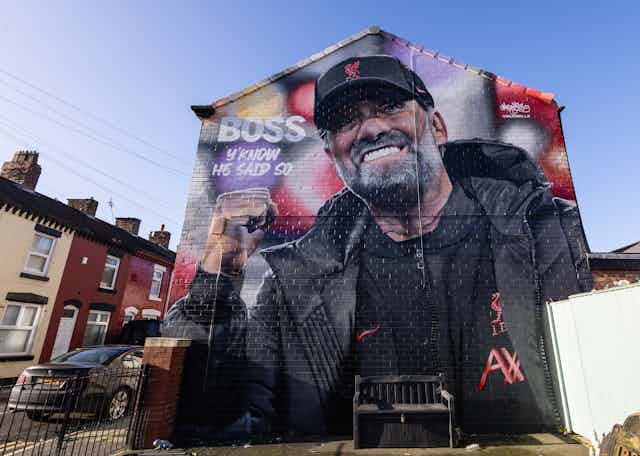In his first press conference after arriving at Anfield in 2015, Jürgen Klopp stated: “It’s not so important what people think when you come in. It’s much more important what people think when you leave.”
After nine years, his words resonate through the hearts of Liverpool FC fans. On January 26, Klopp announced that he would be leaving the club at the end of the season.
Klopp has given Liverpool fans many memories to cherish. In 2019, his side staged a miraculous comeback against Barcelona on the way to lifting the Champion’s League trophy in Madrid. The following year, he ended Liverpool’s 30-year wait for a Premier League title.
Klopp inherited a Liverpool squad without any promising potential and a board that lacked vision and desire. Between 2010 and 2015, Liverpool had won just a single trophy – the League Cup in 2012.
However, Klopp delivered his first elite European trophy within three years of being appointed. From that point onward, he’s gone on to win all major trophies, guide Liverpool to four major European finals, and lose out on two Premier League titles by a single point.
Klopp will leave a legacy similar to that of Liverpool’s iconic manager, Bill Shankly. Between 1959 and 1974, Shankly transformed the club from second-division obscurity to three-time English champions and winners of the Uefa cup (Europe’s second-rank club competition).
Shankly endeared himself to fans of Liverpool FC, a club with deep working-class roots, by embracing the ethos of socialism (where individuals work together as a collective) as a fundamental principle for team success. Klopp’s persona as a man of the people – through his style, attitude and background – also strongly resonates with Liverpool’s socialist roots and blue collar community.
For instance, Klopp insists that every Liverpool player must earn the right to touch the famous “This is Anfield” sign by winning silverware. The iconic Anfield sign was first hung up on the wall of the player’s tunnel by Shankly to remind opponents of the spirit of Anfield.
Socialist Spirit
Klopp has never sought to create a hierarchy between himself, the players and the fans. Early on in his tenure, he referred to himself as “the normal one” and has, on several occasions, been spotted sharing a drink with local people in the pub. In his press conferences, Klopp has often said that the team drew inspiration from the staff at the club’s training ground.
Since his appointment, Klopp has also recognised the power of Liverpool fans, referring to them as the 12th man responsible for supplying energy to the squad. As Anfield reverberates today with the chant “I am so glad that Jurgen is a red”, the echoes of such intense emotions are a reminder for loyal Liverpool supporters of a legacy still sung about around half a century later.
Klopp has brought the same fiery socialist spirit back to Liverpool that Shankly managed to harness in the 1960s. Two managers separated by generations but bound as Merseyside icons who understood that success stems from people.
Engaging with the fans
Like Shankly before him, Klopp has resurrected Liverpool by understanding what the club’s fans craved more than silverware – someone who embodies the club’s working-class soul. A leader to stand shoulder-to-shoulder with through good times and bad.
From Klopp’s iconic fist pumps after victories, to his meaningful apologies to fans during times of crisis, show his authentic relationship with the club and the fanbase. He celebrates goals in nerve-wracking victories by running up and down the sideline (once pulling his hamstring in the process). And he openly asked supporters for forgiveness after a humbling 3–0 defeat by Brighton in 2023.
Klopp’s outgoing authenticity has also resonated powerfully with Liverpool supporters around the world. He actively embraces fan media like “The Redmen TV” YouTube channel, and makes an effort to appear in person for interviews and podcasts. He even once wrote a letter to a young fan reassuring him over his feelings of personal anxiety.
Revolutionary vision
When Shankly was appointed in 1959, he was frustrated with Liverpool’s training regime and facilities. Previously, players had become accustomed to running on the street as part of their training routine. However, Shankly revamped the training regime, introducing sessions on the training ground where players could run and practice while wearing appropriate football boots.
In a similar way to Shankly, Klopp has helped the club evolve. He insisted on building modern training facilities where the youth academy could be integrated with the first team, and played a part in the development of the club’s new training ground.
Liverpool’s managing director Andy Hughes praised the combined efforts of Klopp, sporting director Michael Edwards and academy director Alex Inglethorpe for their “instrumental role” in creating the new facility.
Klopp’s legacy at Anfield, in the Premier League and in modern football, is beyond doubt. As was the case for Shankly’s successor, Bob Paisley, the next Liverpool manager certainly has big boots to fill.

